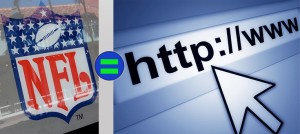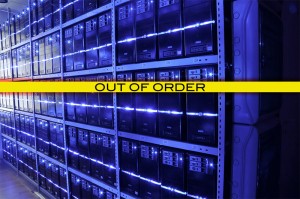
The truth of the matter is I never thought so either until the last few days of watching draft coverage. In reality the way teams pick players is similar to the way you SHOULD hire a web professional to design, develop and manage your website.
Here are the reasons, hear me out, they will make sense to you. (I think)
Film: Countless hours of film are watched on every player projected to be in the draft. The similarity here is that you should thoroughly review a designer’s portfolio. Don’t take their word how good they are, review their sites and see for yourself. Click around, do you see errors? If there is evidence of sloppy work, they probably aren’t the company for you to enter into a relationship with.
Team Visits: Players are invited by teams, and are tested and interviewed. For you this is the meeting you have with the web pro, it can be in person or via a phone call. Prepare a list of questions, hit them with your requirements and see how they answer. If they talk down to you or can’t answer any questions then cut the interview short. Now some questions require research so if the web pro tells you they’d have to look into certain requirements, that is ok and actually a sign of honesty. More than anything ask yourself, is this someone I can work with? if you are uncomfortable at this point the relationship won’t get better.
Background Research: Teams thoroughly look into player backgrounds and seeming top picks drop like a stone as they have questionable morals or red flags. For you this is checking references. Ask for a few clients to speak to and see how this person is to work with. Also see how they respond to support requests. If they don’t respond quickly, move on.
Bottom Line: See, it is a very similar process, both take a bit of work, but in the long run you will be happier if you follow these steps. Some NFL teams to better than others year after year. The reason is simple, they follow tried and true practices and always seem to come away with the best players. While it is luck grabbing players like Tom Brady in late rounds, in business we make our own luck. So put the time in before you hire a web professional and you will be much happier long term.
Sadly, in the world we live in, websites are always under threat of attack from hackers and people with negative intent. A good example of this happened the other day. The company which houses my dedicated server was down for almost 24 hours. They claimed it was due to a firmware update in their main data center. Now whether that’s true, or they were hacked and they just can’t tell you for security reasons, the result was the same. My site was down as were many of my customers who are on that particular server. Unfortunately with hundreds of thousands of sites affected, it is very hard to get in touch with hosting companies. Live chat went down as they couldn’t handle the volume, and forget about phones as you sat on hold for hours.

The problem is that since emergencies don’t happen all the time (Thankfully), people don’t always know where to turn. For me this is a question of educating my clients. In my next email to my client list, I will be instructing people what to do in the event their website is down and/or email. Unfortunately one of the first thing that happens is people want to go in and change email settings. I always instruct people to first make sure their websites are up and running before mucking around with your email. Typically your email settings don’t change very often. So they should leave them alone unless they speak with me.
Managing websites is about communication. In this day and age you need to have alternate forms of communication as well. Social media is perfect as most people are on either Facebook or Twitter and both have an excellent up time records.